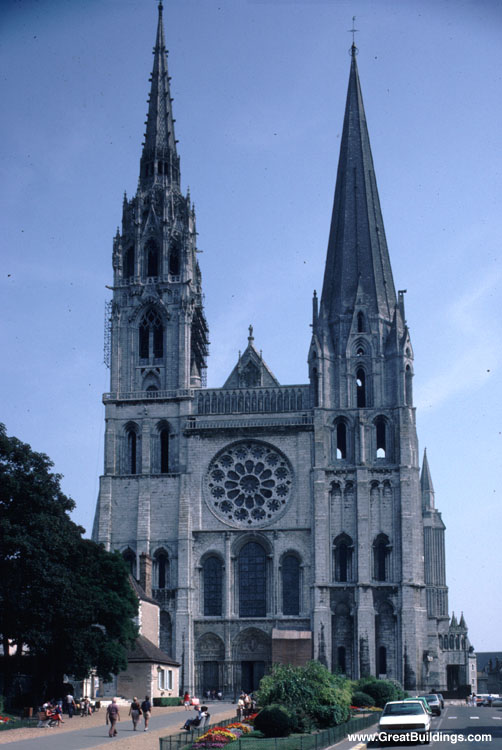

| The main part of the great cathedral of Notre-Dame at Chartres was built in less than 30 years in the mid-13th century, when high Gothic architecture was at its purest. This gives it a unity that is almost unique. The cathedral was built to replace a 12th-century church of which only the crypt, the base of the towers, and the west facade remain. Remarkable 13th-century stained-glass windows and a Renaissance choir screen add to the beauty of the edifice. |
CATHEDRAL OF NOTRE-DAME, CHARTRES, PLANS AND DRAWINGS

The 12th-century West Facade
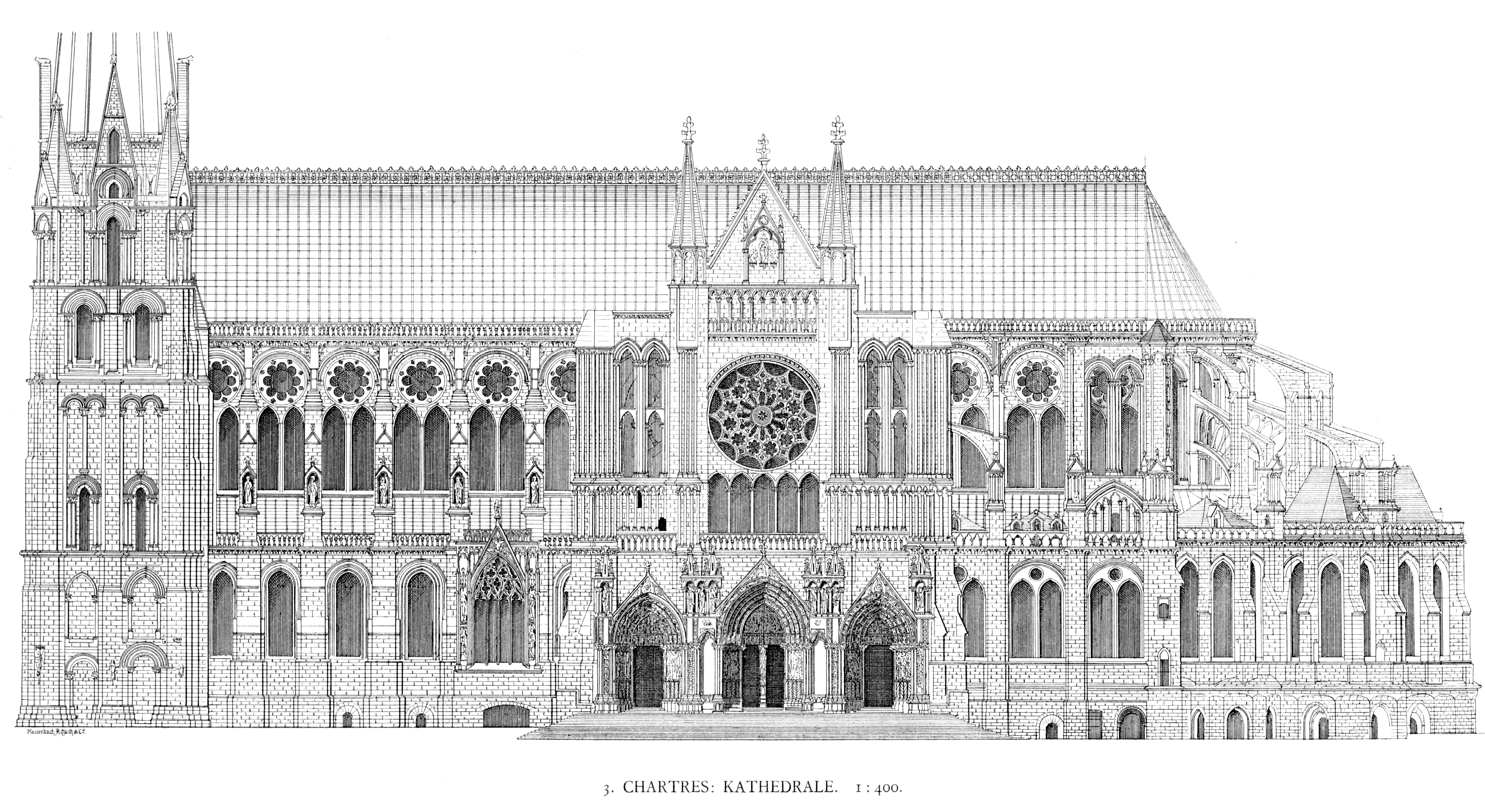
South Elevation
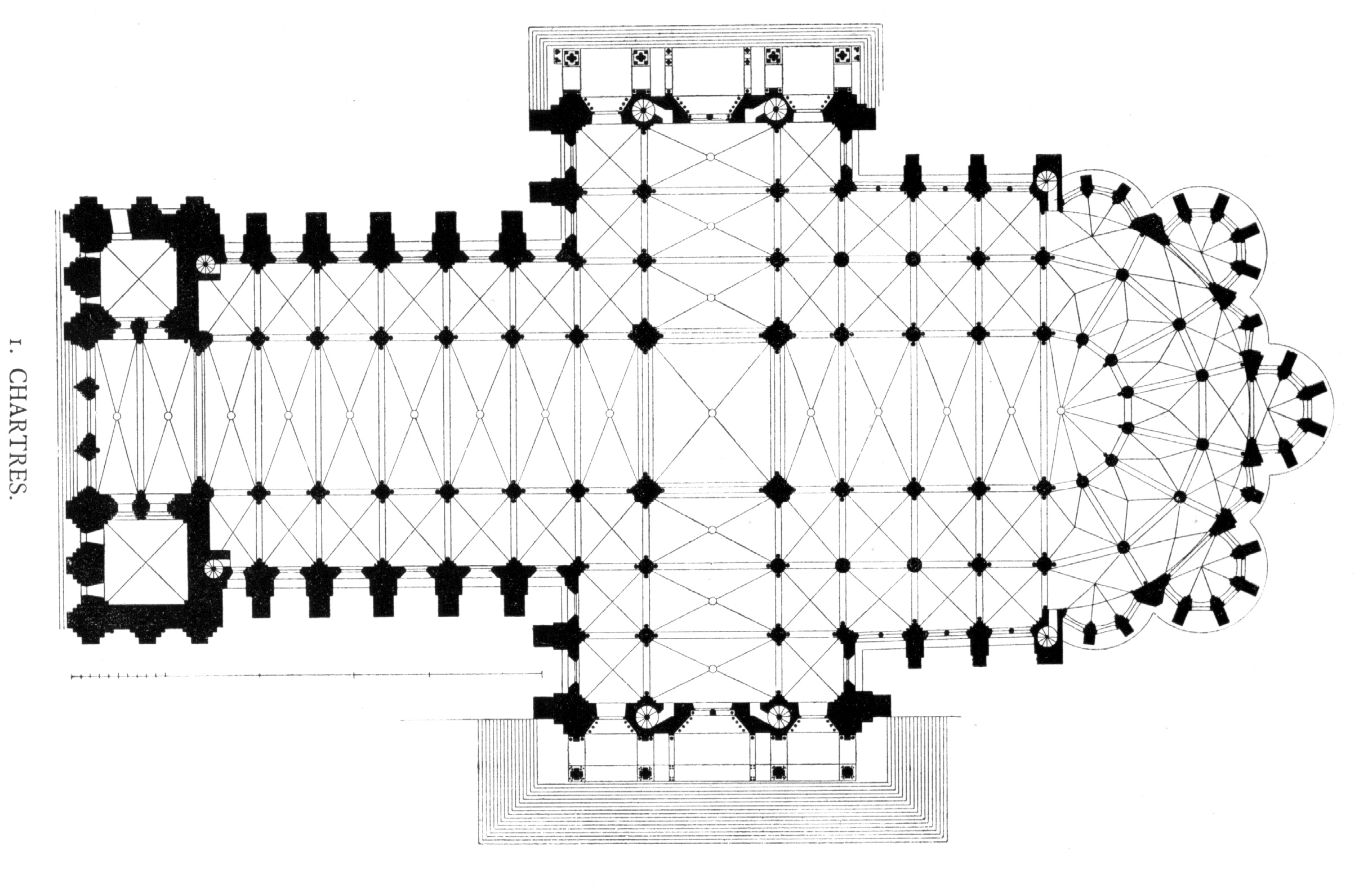
Floor Plans
STATUES

|
Christ Blessing: The figure of Christ Blessing is from the south portal of the Chartres Cathedral. At the beginning of the 13th century there is a relaxation in style of the architectural sculptures. The faces fill out and the features become much more natural and human. In addition, the statues appear rather more as works of art in their own right and less as architectural adjuncts.
|
|
The west portal of the Chartres Cathedral is called Royal Portal. It has been suggested that the designation "royal" refers to the Virgin as Queen of Heaven. This portal, begun in about 1150, offers an iconographical and technical conception of sculpture that is partially inherited from Romanesque portals. The theme is a resume of the Christian doctrine and an illustration to the links between Old and New Testaments: on the jambs are the prophets and the precursors of Christ, and on the tympana, from the left to the right are depicted the Ascension, Christ of the Apocalypse, and the Mystery of the Incarnation. In spirit, the portal is Gothic; tympana and lintels are recessed under the arches, which are decorated with series of statuettes, and each jamb is occupied by a single figure whose core it becomes, to form the famous column-statue. The picture shows the figures of the left-hand jamb. |
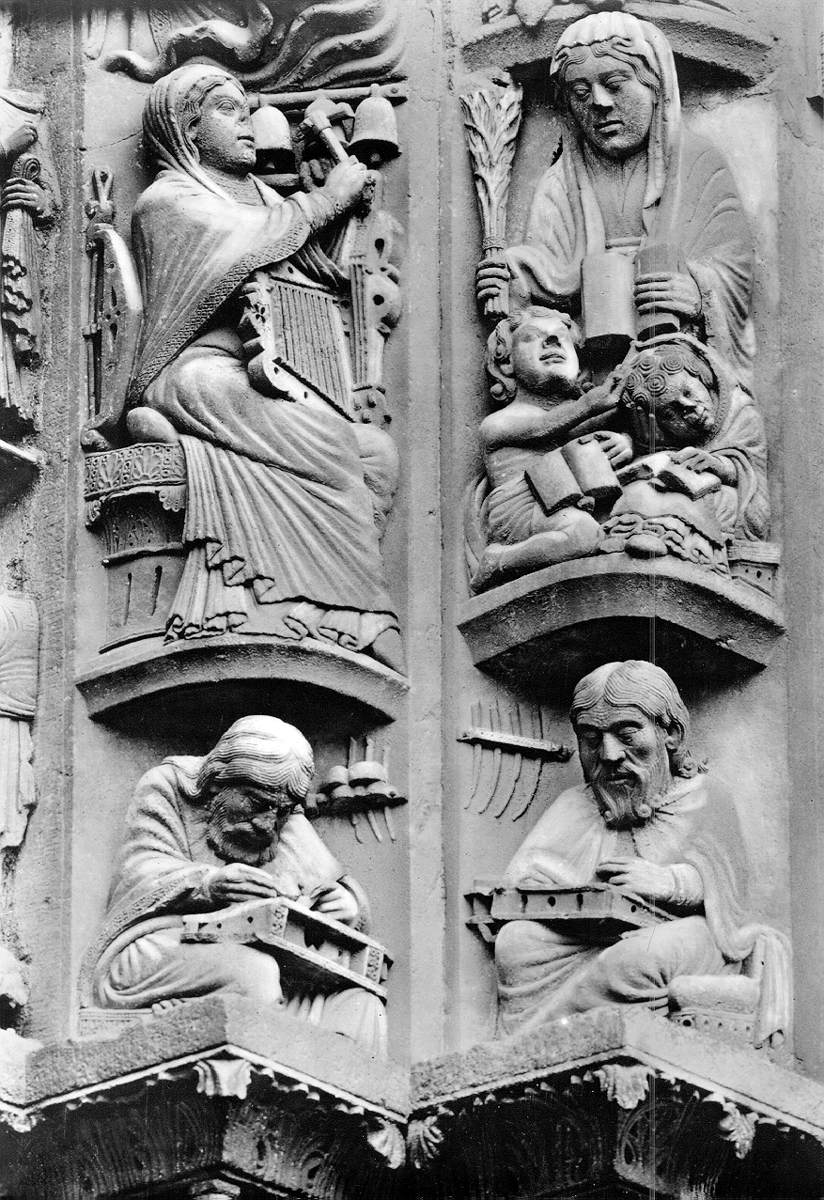
The picture shows some of the statuettes: Music (with Pythagoras) and Grammatic (with Donatus).
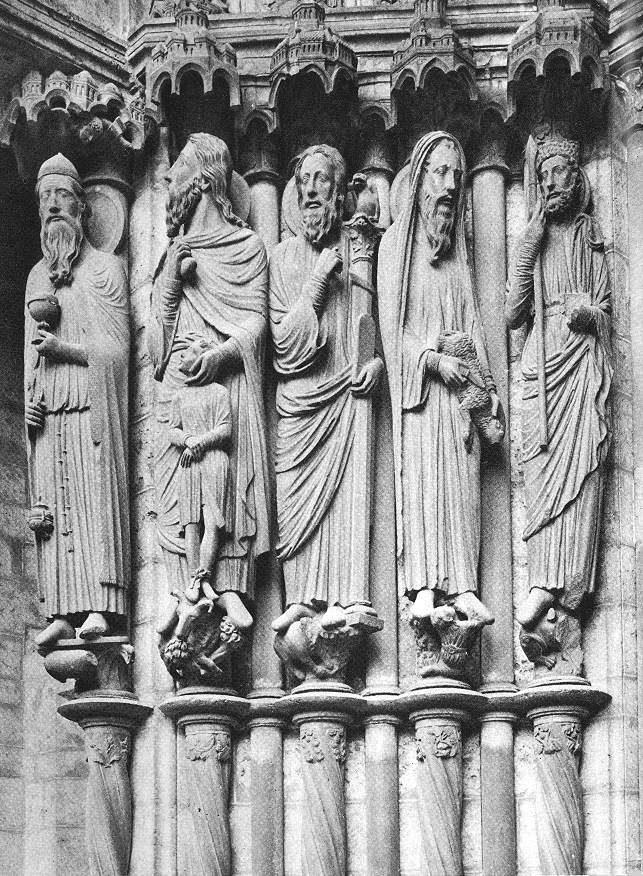
These are the east jamb figures on central portal of north transept: Melchidezek, Abraham and Isaac, Moses, Samuel and King David.

| St Theodore, in the embrasure of the right door of the south transept of the Chartres Cathedral, is stylistically among the later figures at Chartres, probably dating from the last period of the work there - that is about 1230. By then, Gothic art had completed its evolution towards the mastery of three-dimensional form and truth to nature. Bare-headed and wearing the costume of a 13th-century warrior, the saint is the embodiment of the ideal knight. Gothic statuary had reached perfection. The thin, oval face is still of the great Chartres family, but has a more marked virility, confidence and sobriety than have the faces of the prophets. |
THE 13TH-CENTURY STAINED-GLASS WINDOWS
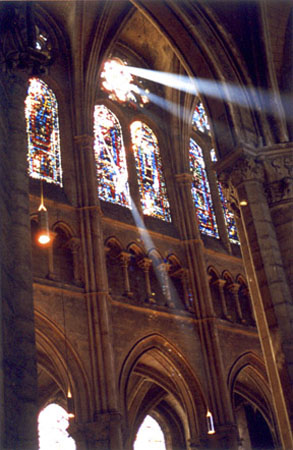

|
| This window is located on the south side of the Cathedral, at the entrance to the choir, in bay 14. It consists of 24 segments: The three at the bottom of the window depict the three temptations of Christ as recorded by Matthew 4:1-11 and Luke 4:1-13. The next six panels tell the story of Christ's first miracle at Cana as recorded in John 2:1-11. The next four central panels show four angels upholding a throne and the Virgin Mary and her Son, Jesus. Ten narrow side panels depict angels doing homage to Mary and Jesus. The central panel above May's head shows the Holy Spirit as a dove. |
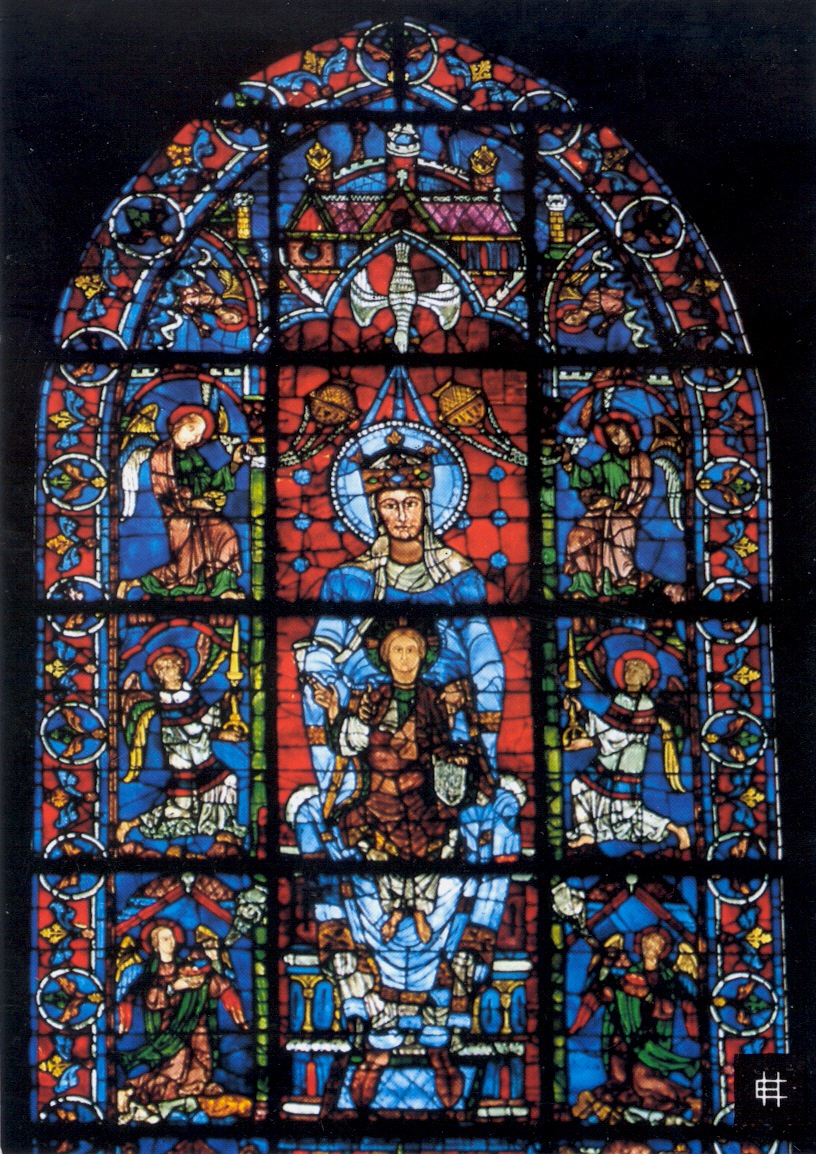
LABYRINTH
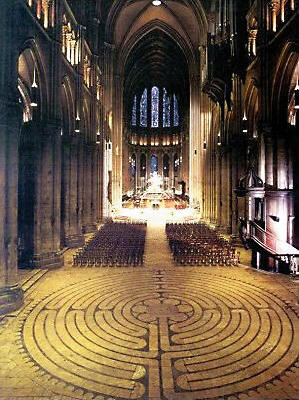
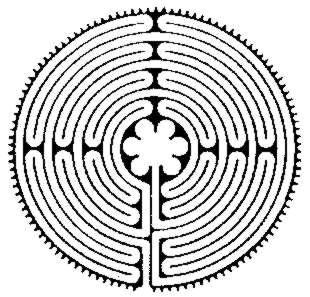
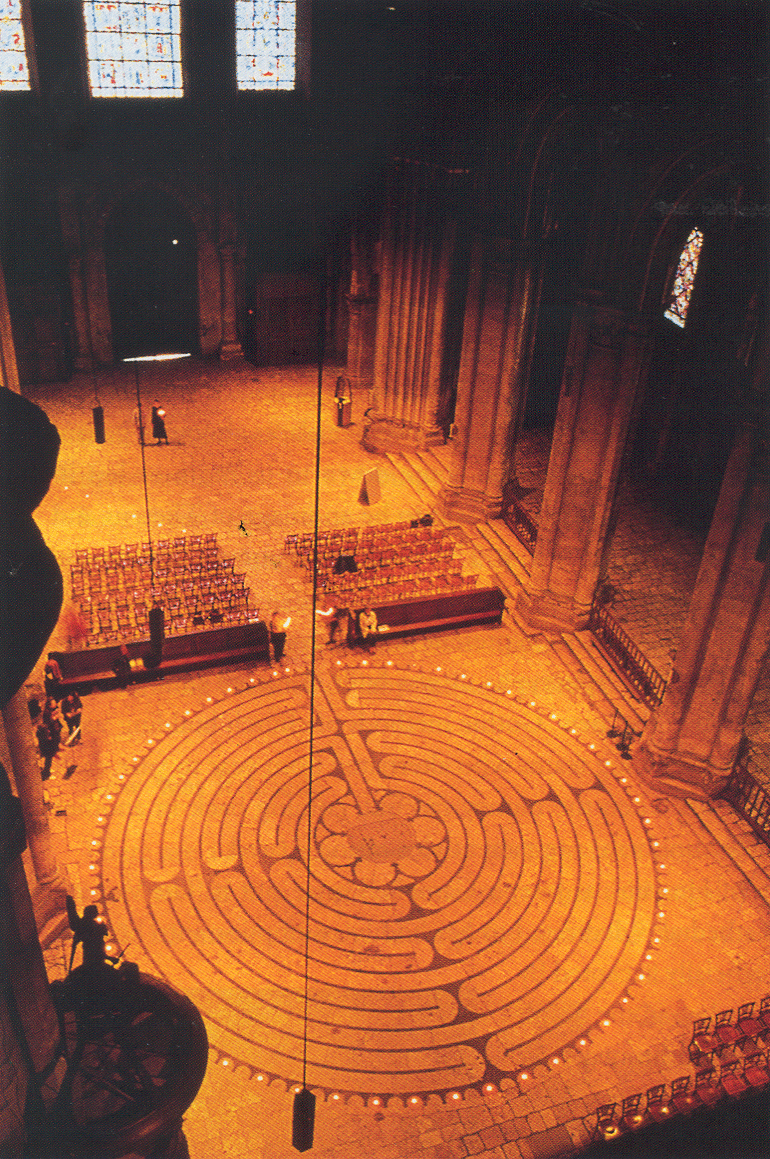
|
Medieval churches later used the labyrinth as a symbol for the Christian pilgrimage to Jerusalem where it became a safe substitute for the actual journey during the Crusades. The labyrinth also symbolized the journey to the heavenly city of Jerusalem, or the journey to heaven. In this way the labyrinth symbolized the journey of life. It was during this time that labyrinths became more elaborate in their design. One of particular interest is the labyrinth found in Chartres Cathedral, built around 1200 A.D. This labyrinth contains unique design elements that add to the intricacy and beauty of the design.
The center of this labyrith is made up of a six-petal rose design called a rosette. The rose was a common symbol for the Virgin Mary, and was found throught Europe in the Notre Dame cathedrals. The rose is also a much older symbol often associated with beauty and the feminine. Additionally, it has been related to the lotus flower of Eastern traditions. The Chartes labyrinth was also believed to function as a calendar. It contains an outer ring of 113 spoke-type objects called "lunations", that could have been used to mark the 28-day lunar cycles throughout the year. In this way, the church could track the Easter feast. |
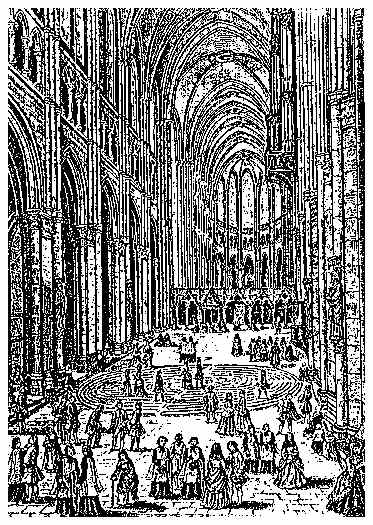
An 18th Century Engraving of the Chartres Labyrinth
| From within its pathways the overall design of a labyrinth is obscured. Only when viewed from above is its path seen as purposefully ordered and deliberately leading to the center. A prime example is the Labyrinth in Chartres Cathedral which dates back to the Thirteenth Century when it was popularly called Chem de Jerusalem--a "Journey to Jerusalem" for stay-at-home pilgrims. |
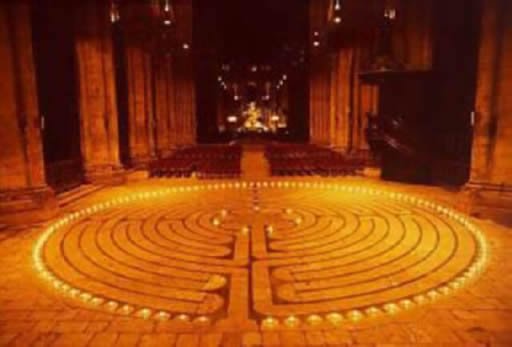
Chartres Cathedral labyrinth with candles.
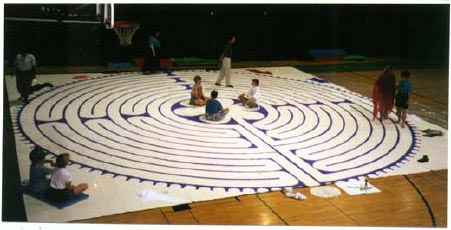
A volunteer group set up a labyrinth in the gymnasium of the Birmingham YWCA modelling on the one from Chartres Cathedral
* * * * *